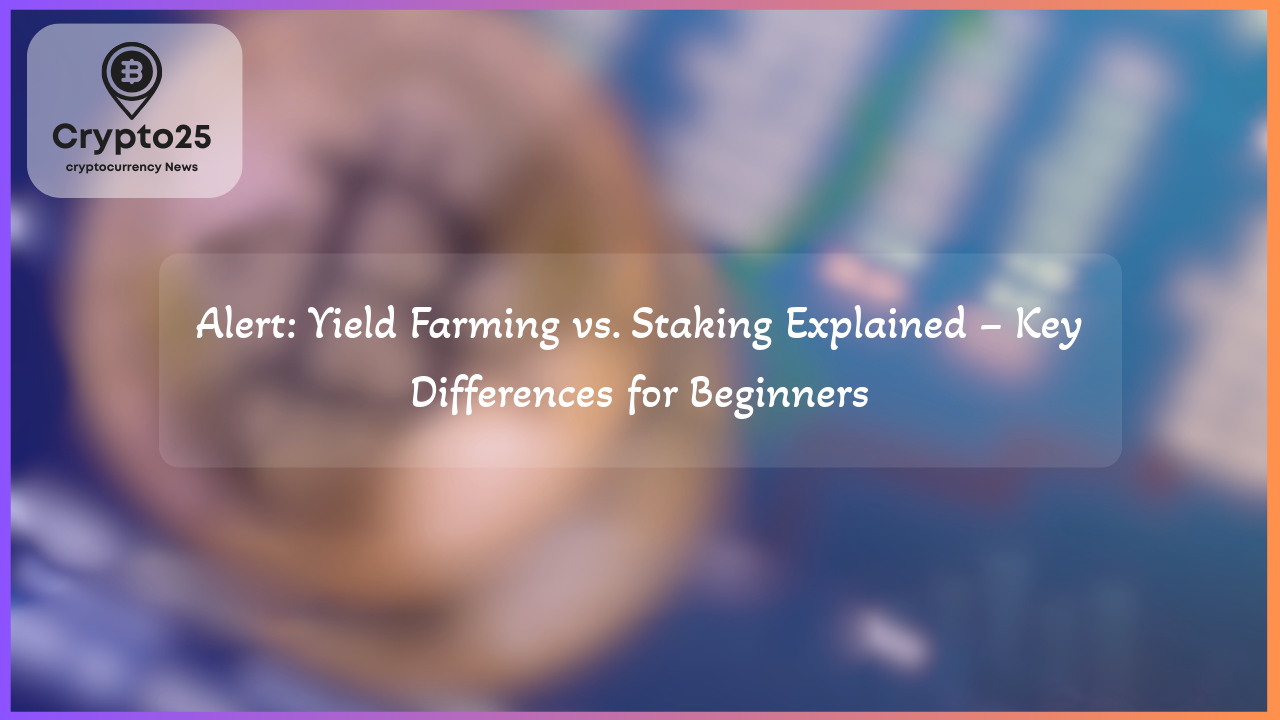
Earning passive income with cryptocurrency has become increasingly popular, with yield farming and staking emerging as two of the top strategies in decentralized finance (DeFi). While yield farming capitalizes on liquidity pools and DeFi opportunities, staking works to secure blockchain ecosystems through token commitments. Picking the right option depends on understanding their mechanics, risks, and rewards.
What is Yield Farming in Crypto?
Yield farming, often hailed as "liquidity mining," is an income-generation method that leverages DeFi protocols. This process involves depositing cryptocurrency into liquidity pools that fuel decentralized exchanges and lending platforms. In return for your participation, you earn rewards in the form of transaction fees, governance tokens, or interest.
In essence, yield farming allows you to act as a liquidity provider. Platforms like Uniswap, Curve Finance, and Aave reward participants for supplying crypto to their systems. However, not all protocols offer equal payouts. Typically, riskier or less liquid assets yield higher rewards. For instance, newer tokens or high-volatility coins come with attractive returns but heightened risks.
Dynamic in nature, yield farming often requires participants to switch between pools and protocols in search of higher yields. This active involvement provides lucrative opportunities for seasoned investors but also introduces significant risks. Smart contract vulnerabilities, impermanent loss, and rug pulls are potential downsides that can lead to severe financial losses. According to a 2024 analysis by PeckShield, DeFi hacks caused the crypto market to lose over $300 million that year, highlighting the importance of proper research before diving into yield farming.
What is Staking in Crypto?
Staking is a simpler, more predictable way to earn passive income in the crypto ecosystem. Unlike yield farming, where tokens are deposited into liquidity pools, staking involves locking up your tokens to support the operations and security of a blockchain network that uses a proof-of-stake (PoS) consensus mechanism.
Popular PoS blockchains like Ethereum, Cardano, and Polkadot allow token holders to stake their crypto as a way of participating in transaction validation and network governance. Stakers are rewarded in native blockchain tokens, such as ETH or ADA, which can be claimed periodically.
There are two primary ways to participate in staking:
- Direct Staking: Crypto holders who possess technical expertise can run their own validator nodes, although this often requires a substantial minimum deposit (e.g., 32 ETH for Ethereum).
- Delegated Staking: This system lets users delegate their tokens to validators who manage the staking infrastructure and share their earnings.
Compared to yield farming, staking typically involves fewer risks. There’s no impermanent loss, and rewards are often more stable. However, slashing penalties for validators, network bugs, and price volatility can still affect your returns.
Yield Farming vs Staking: Comparing the Two Strategies
While both yield farming and staking generate passive income, they cater to different user profiles due to variations in complexity, risk, and rewards.
Purpose
Yield farming incentivizes liquidity provision for DeFi protocols. Yield farmers deposit tokens to support decentralized exchanges or lending platforms and earn payouts in return. On the other hand, staking’s primary goal is blockchain security. Stakers help validate transactions and ensure that a PoS network remains stable and operational.
Potential Returns and Risks
Yield farming generally offers higher annual percentage yields (APY) compared to staking, sometimes exceeding 100% for volatile or high-risk pools. However, this comes with associated risks like smart contract vulnerabilities or impermanent loss, where liquidity providers can lose out if token prices fluctuate.
Staking offers lower but more predictable returns. Ethereum staking yields typically hover between 4–6%, while Polkadot and Cardano networks may provide marginally higher APYs. These steady returns make staking a safer option for risk-averse investors.
User Involvement and Complexity
Yield farming demands active monitoring, strategy optimization, and knowledge of multiple DeFi protocols. It suits crypto enthusiasts who enjoy managing their portfolios in a dynamic, fast-paced environment. In comparison, staking is far more passive. Once tokens are locked, rewards accumulate automatically, requiring minimal effort from the participant.
Flexibility and Accessibility
Yield farming is more flexible in terms of deposit periods. Liquidity can often be withdrawn at any time unless it’s locked into special time-bound pools. Meanwhile, staking may come with unbonding or withdrawal waiting periods depending on the network. Ethereum, for instance, requires several days to withdraw staked tokens due to its withdrawal queue.
Cost Considerations
Gas fees are a notable cost for yield farmers, particularly on blockchains like Ethereum, where interacting with complex smart contracts can quickly drain profits. In contrast, staking involves minimal fees aside from delegation costs, making it a more wallet-friendly option.
Comparison Table
| Aspect | Yield Farming | Staking |
|---|---|---|
| Primary Goal | Provide Liquidity | Secure Blockchain |
| Typical APY | 10–100% or more | 4–10% |
| User Involvement | Active Management | Set and Forget |
| Flexibility | High | Medium to Low |
| Complexity | High | Low |
| Risk | High (impermanent loss, bugs) | Lower (slashing, price drops) |
Which Approach Is Right for You?
Yield farming appeals to experienced DeFi users with high risk tolerance and ample time to manage their investments. Meanwhile, staking is ideal for long-term holders seeking stable income with low stress. Choosing between the two ultimately depends on your financial goals, technical expertise, and risk appetite.
Regardless of your preference, ensure you conduct due diligence before depositing funds into any protocol. Whether you’re yield farming or staking, a cautious and informed approach will help you navigate the ever-evolving crypto space.
Disclaimer: This article serves educational purposes only and should not be interpreted as financial advice. Cryptocurrency investments carry inherent risks, and individuals are encouraged to consult financial professionals and do thorough research before proceeding.
